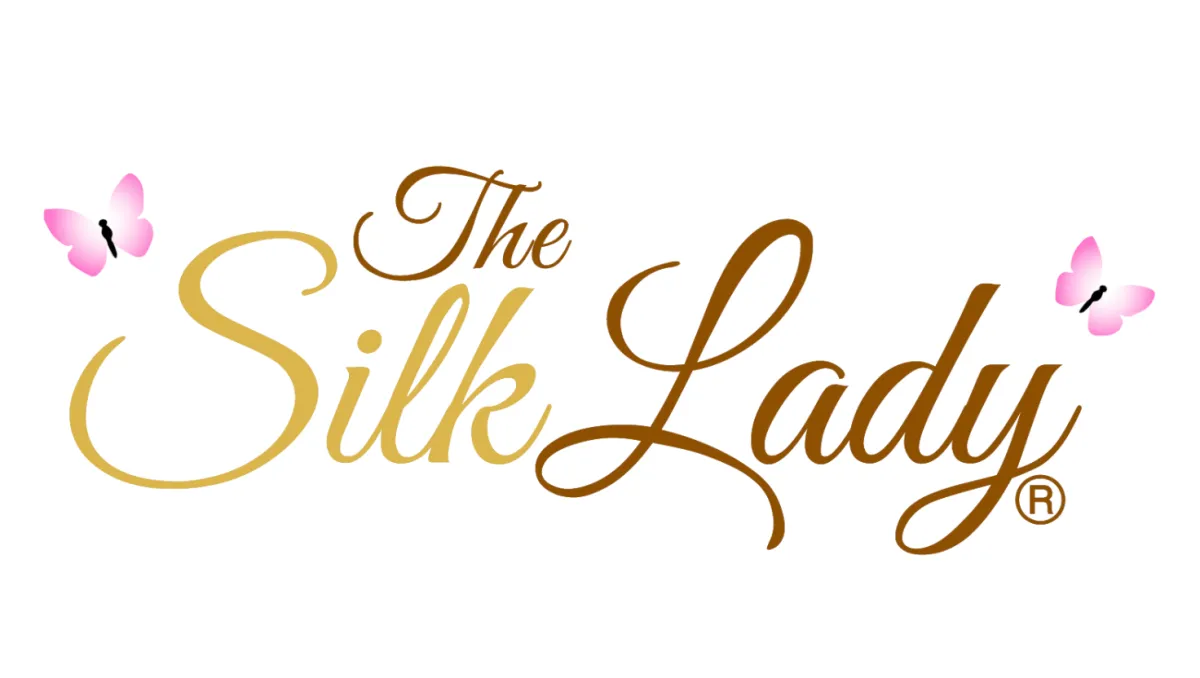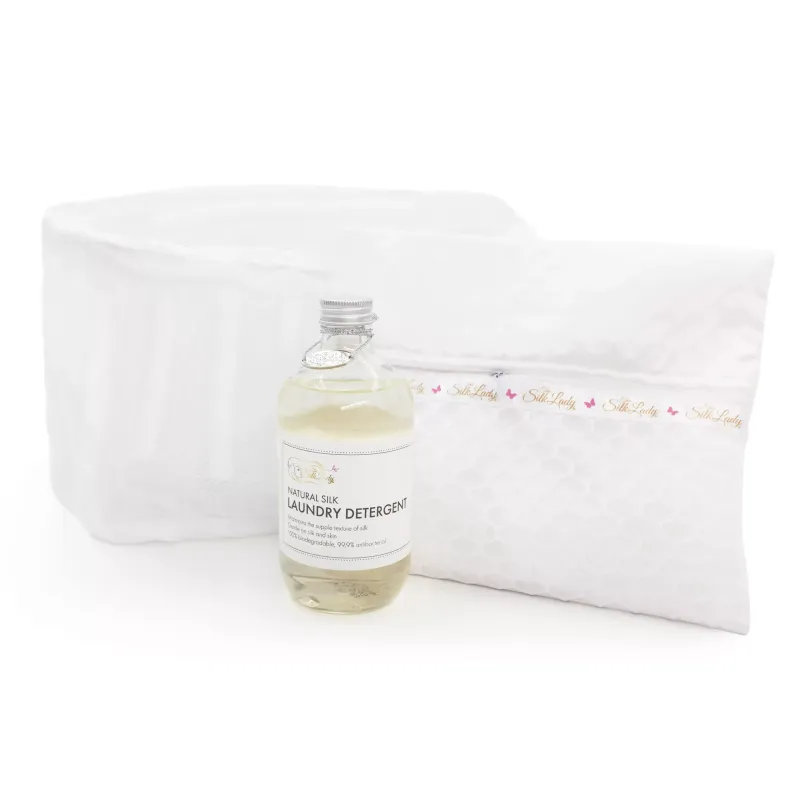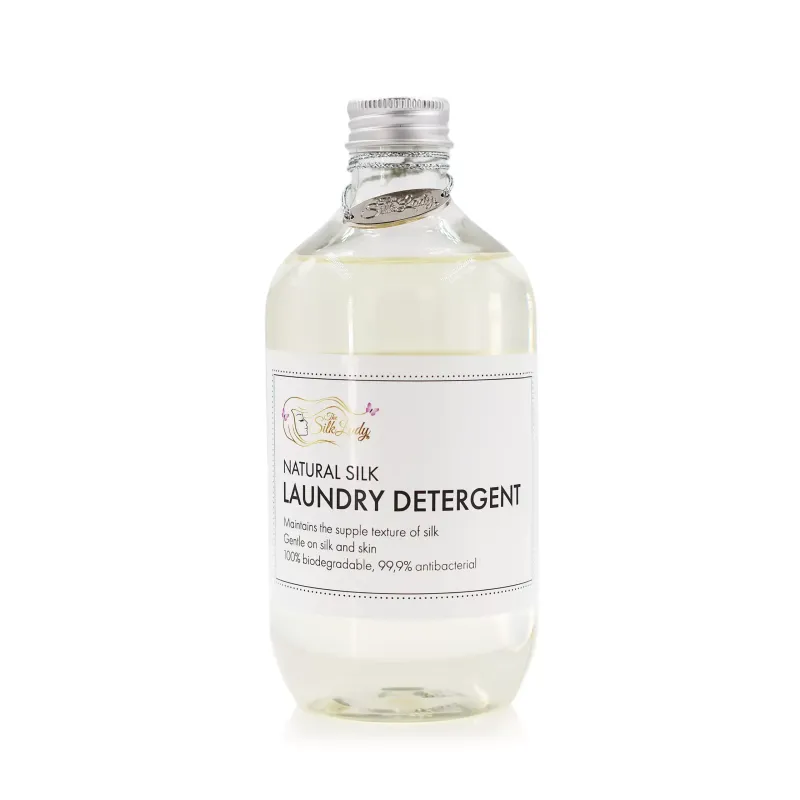The Ultimate Silk Care Guide
Caring for silk isn’t just about cleaning – it’s about preserving the quality and experience of wearing a beautifully made fabric.
By following these steps, your Silk Lady pieces will stay soft, shiny, and luxurious for years to come.
Silk is luxurious, elegant, and delicate – and with the right care, it can last a lifetime.
Whether you're treating yourself to a Silk Lady pillowcase or a gorgeous silk garment, understanding how to care for silk properly is essential. This guide will walk you through everything you need to know about silk care – including hand washing, machine washing, and how to restore that luxurious sheen.
Why Is Proper Silk Care So Important?
Silk is a natural protein fiber, and with incorrect handling (like using hot water or harsh detergents), it can lose its luster, shrink, or become damaged. The good news? Silk care isn’t complicated – you just need to follow a few golden rules.
The Golden Rule: Never Wash Above 30°C
Whether washing by hand or using a machine, never expose your silk to water hotter than 30°C (86°F). High temperatures can damage the silk fibers and ruin the garment's texture and shape.
Hand Washing Silk: Gentle and Effective
Hand washing is the preferred method for Silk Lady products. Follow these steps for best results:
- Turn the garment inside-out.
- Use lukewarm water and a mild detergent or clear baby shampoo.
- Let the item soak for 3 minutes.
- Gently swirl the garment in water using your hands – do not rub or scrub.
- Rinse thoroughly and gently squeeze out excess water – do not wring.
- Hang to drip dry away from direct sunlight.
💡Pro Tip: Always wash silk items separately to avoid color transfer.
Can You Machine Wash Silk?
Yes – with caution. Here's how to do it safely:
- Use a laundry bag to protect your silk item.
- Wash separately from colored items.
- Set your machine to a gentle silk or wool cycle, no hotter than 30°C.
- Use a mild detergent or baby shampoo.
- When the item is about 90% dry, iron it inside-out on a low/silk setting.
Dealing With Stains
For tough stains, apply a drop of Sunlight liquid detergent directly onto the spot. Follow up with the recommended hand or machine washing instructions.
🚫 Avoid: Bleach, tumble drying, and direct sunlight – all of which can damage silk.
Restore the Natural Sheen of Your Silk
Want to bring the shine back to your silk? Here's a simple home remedy:
In a large bowl, mix ¼ cup of white distilled vinegar with 3.5 liters of lukewarm water.
Submerge your silk item and gently swish it around.
Rinse several times in clean lukewarm water.
Hang to air dry naturally.
✨This vinegar rinse helps neutralize soap residue and restore silk’s smooth, shiny finish.
What is Momme?
Momme is the standard unit that is used to measure silk weight and quality. Similar to thread count, the higher the momme, the denser and more durable the silk weave will be to withstand all those laundry washes and night rests. For most silks, the standard momme is between 12 and 19. Those silks with a momme weight of 16 to 19 are considered high quality. However, 22 momme count silk bed sheets are absolutely the best quality. So the higher the momme count, the more tightly woven the silk sheets will be.
Do silk pillowcases get hot?
Silk naturally regulates heat, which helps you maintain the correct body temperature. Silk doesn’t conduct heat, so if you want to keep cool at night on hot days, go with silk. On the flip side, it retains heat during cold weather.
What is the difference between genuine silk and poly satin?
Satin is a weave made from polyester or nylon, which is man-made fabric and is chemical based. Nylon and polyester satin fabrics are derived from petroleum, or oil. A satin pillowcase or a satin sheet set is of synthetic fiber; therefore, is not sustainable or particularly environmentally friendly to produce.
Silk on the other hand, is a natural fiber. Real silk is biodegradable and not made with any dangerous chemicals or fossil fuels. Genuine silk breathes and helps to regulate the temperature of the body. It naturally helps to keep you warm during the winter and cools the body temperature during the summer. This reduces the level of discomfort while sleeping. As a petroleum based manmade fiber, satin lacks the natural breathability, absorbency, and comfort of silk.
A poly-satin is considerably cheaper than silk. Although the closest alternative to real silk, poly satin products are not as smooth as silk. Poly-satin is not as tightly woven as genuine silk, therefor, it is not as protective against allergens and dust mites as silk.
Other differences between silk and synthetic fiber like poly-satin lie in moisture and odor control. When a person’s head touches a traditional pillowcase during sleep, oils from their hair and skin are transferred to that fabric. Over time, these oily stains will become more difficult to remove and can actually leave an odor on the pillow case or even in their hair.
In addition, Mulberry silk has natural antibacterial properties that fight odor-causing bacteria that may cause body odors as well as discoloration in fabric! Over time, untreated satin/polyester can yellow/discolor as a result of these bacterial issues… but not mulberry silk!
What is the difference between organic and pure silk?
All our products are of pure 100% Mulberry silk that has been safely manufactured through all levels of production. All of our products are Oeko-Tex® Standard 100 certified. This means that they have been lab-tested and guaranteed to be free of all harmful substances, including toxins and irritants. Some of our silk products – those labeled 100% organic have also an organic certification.
How do I know it is real silk and not an imitation?
Burning real silk smells like burning human hair, and will self-extinguish quickly after taking away flame source. The ash from burning silk is black, crispy and turns to powder easily when crushed – like paper.
Poly-satin tends to combust rapidly in intense flame and smells similar to burning plastic. The ash of fake silk tends to be sticky, twisted, and difficult to break apart similar to a burnt plastic bottle.
COMPANY
CUSTOMER CARE
CUSTOMER CARE
LEGAL

© Copyright 2025. The Silk Lady.
All Rights Reserved.


